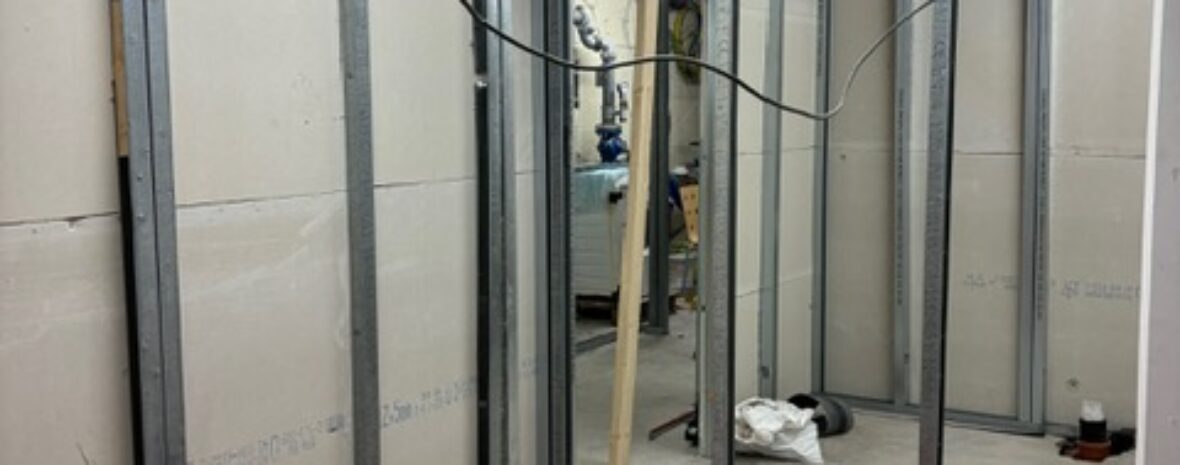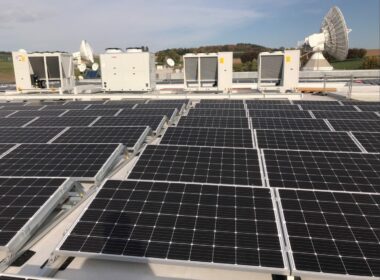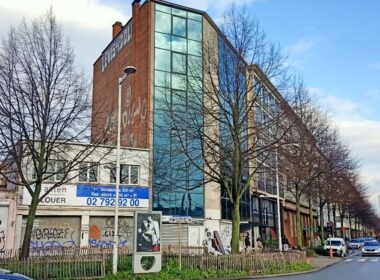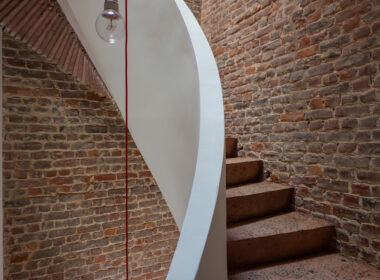Designing buildings today means ensuring their resilience tomorrow! Designing buildings in an adaptable and reversible way means they’re able to respond over time to changes in use, social needs and environmental challenges. With a view to sustainability, resilience and the circular economy, this approach aims to extend the lifespan of buildings, limit resource consumption and reduce greenhouse gas emissions caused by demolition and reconstruction.
Converting former office buildings into housing is particularly relevant in Brussels, where there are vacancies in the service sector alongside the challenge of tension on the housing market. However, the technical and regulatory hurdles facing these reconversion projects increase costs and complicate operations. These factors could be managed by using building renovation techniques that are geared towards technical and spatial adaptability and reversibility.
The principles of technical reversibility are based on the ability to dismantle and reuse materials: assembly and dismantling methods, documenting the materials and assembly techniques used, and separating the different layers of the building. The notion of layers underlines the fact that the structure, the envelope, the technical systems and the finishes don’t all have the same useful life, the period during which the component retains its initial characteristics. Design must therefore take these time frames into account, by limiting permanent connections between elements with different lifespans, making the elements that become obsolete sooner more accessible, and favouring mechanical connections over glueing elements together. Grouping components according to their lifespan and making them easier to dismantle increases the chances of re-use. However, chemical bonds and the widespread use of different materials will make deconstruction technically or economically difficult.
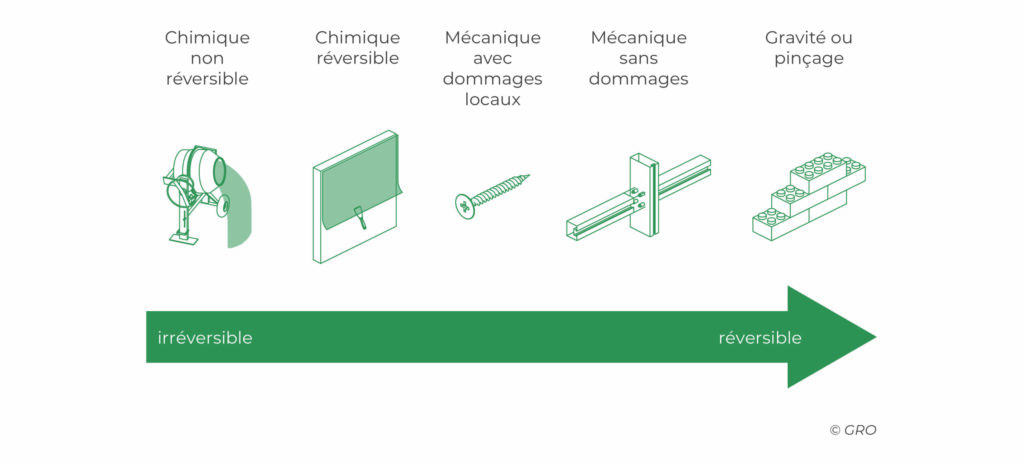
Spatial reversibility complements the technical features, with the emphasis on volumes that can accommodate a variety of purposes. To achieve this, it is advisable to use modular, standardised components, ensuring circulation hubs and technical spaces are positioned strategically, and adopting dimensions (clear heights, spans, depths) compatible with various uses. Oversizing load-bearing structures to a reasonable extent can provide room for manoeuvre for subsequent extensions or changes, subject to an assessment of their environmental footprint and economic viability.

There are a number of practical tools and guides (checklists, project methodologies) available to support the implementation of these principles, including the CIRC 2 and 3 sections of the GRO tool, the TOTEM tool and the guide entitled “Comment rendre mon bâtiment orienté vers l’avenir?” (How can I make my building future-oriented?), which CERAA has contributed to.
At the same time, industrial and social initiatives are providing operational examples: furniture made of wooden components that can be dismantled; leasing of workspaces; transitional urban planning schemes that enable empty buildings to be temporarily occupied, initiatives with a social purpose, etc. These approaches combine modularity, the use of local or reused materials, and business models that promote maintenance, reuse and traceability of components.
In line with legal targets for reducing environmental impact and preserving resources, building adaptability provides a way of making the construction sector more circular. For it to be successful, we need to integrate reversibility principles right from the design stage, adopt construction principles that mean elements can be dismantled, and develop operational tools and incentive-based public policies guaranteeing that conversions will be socially inclusive.
CERAA offers technical and strategic support in these areas for your projects, and will shortly be announcing: a CERAAMidi on circular buildings and a CERAActivité (conference and debate) devoted to the conversion of office buildings.
Follow us:
LinkedIn | Facebook | Instagram
Dorothée Stiernon – Architect and researcher at CERAA
